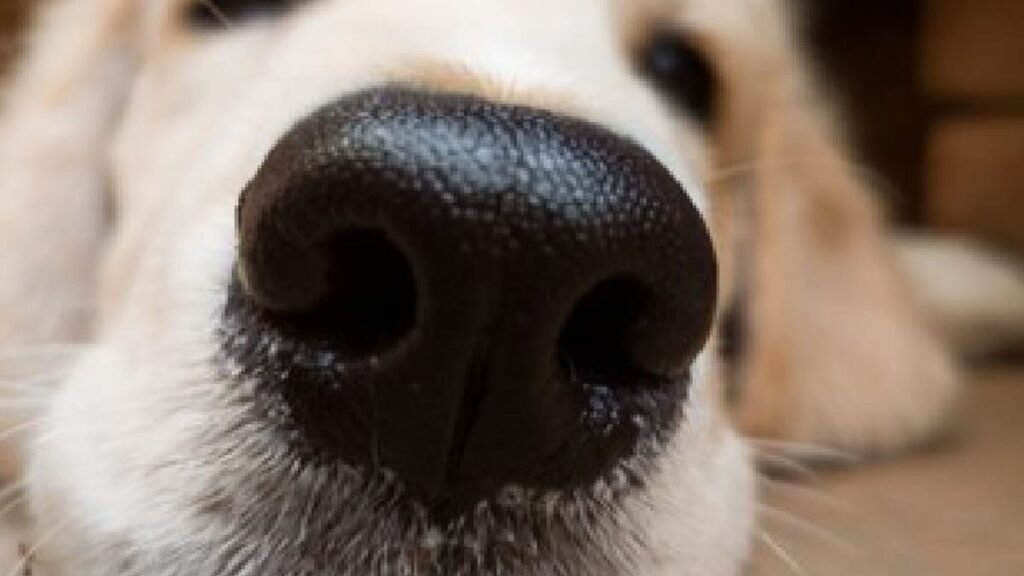The nose of dogs is often used as an indicator of its health: a cold nose in dogsin fact, it is commonly synonymous with good health.
Similarly, it is common to hear that a dog with a hot dry or dry nose has health problems. But are we sure of this clear-cut dichotomy?
Let’s find out together a few more details on the thermoregulation that passes through the dog’s truffle, and its other functions, which determine its temperature.
Why do dogs have cold noses?
There are multiple reasons why the dog has a cold nose and they are related to both the functionality of smell and that of thermoregulation.
Recall that the nose of animals is its main sense organ, through which the dog receives most of the information on the outside world, much more than a human collects with sight!
The bare part (without hair) of the tip of Fido’s nose has been shown to have a lower temperature and higher humidity than those of the external environment. Because?
Cold nose in the dog and sense of smell
The main reason for having the cold nose in dogs it is the enhancement of his olfactory ability: the low temperature and the high humidity of the truffle, in fact, help to dissolve the captured odoriferous corpuscles and send them to the olfactory receptors with greater efficacy.
This has been demonstrated in a recent study which we covered in our dedicated article.
In general, therefore, the cold and wet nose in the dog allows him to perceive even at long distancesil heat of a specific living being, for purposes of survival but also of hunting. This trait was inherited directly from the wolf ancestor.
The dog has a cold nose for thermoregulation
Fido’s truffle it doesn’t work like a thermometer and not necessarily when it is hot and dry or dry indicates the presence of fever or other problems in the animal, however it acts as a body thermoregulator of the animals.
How? Thanks to tears! In fact, they are produced to make eye movement fluid and are secreted inside the tear ducts of dogs which are in continuity with the nose: in this way, they will moisten the dog’s nose and help lower your body temperature, where necessary.
It is good to remember that the dog does not have sweat glands and therefore performs the thermoregulation by lacrimal and nasal secretions, breathing a mouth openor through the paws.
The legend of the dog’s cold nose
Once exposed the physiological reasons why dogs have a cold nose, we can tell a legend that is used to tell children to explain the curious phenomenon and the big heart of dogs.
Well, legend has it that at the time of Great Floodwhen Noah built theArca that he could welcome all animal species to save them, his dog played a fundamental role.
In fact, Noah asked his faithful friend to find a place on the ark for each animal specimen and the dog gladly helped him. Unfortunately, however, there was not enough space left for the dog either, so he had to settle down at the entrance to the Ark, where drafts of cold and humid air they cooled his nose.
Although Noah had invited him to enter, the dog remained in his place, happy and honored to have helped his friend, and so his nose became cold and wet.
When to worry about a cold nose in dogs?
On the basis of what has been explained above, the dog’s nose therefore constitutes more of a indicator of animal hydrationrather than health.
It may happen that in hot seasons it is understandably drier and hotter and it will therefore be the owner’s job to ensure that the animals are hydrated in the best possible way.
However, there are instances where a cold nose in dogs could put us in alarmHere are the most significant ones:
- change in consistency of the secretions (mucus) nasal;
- respiratory difficulties and related fatigue/lethargy;
- sneezing shaking the dog’s head and ears;
- swelling, discoloration o excoriation of the truffle;
- presence of fever.
In case you notice one or more of these associated symptoms, it will be advisable to contact your veterinarian, to take better care of the nose in dogs.

